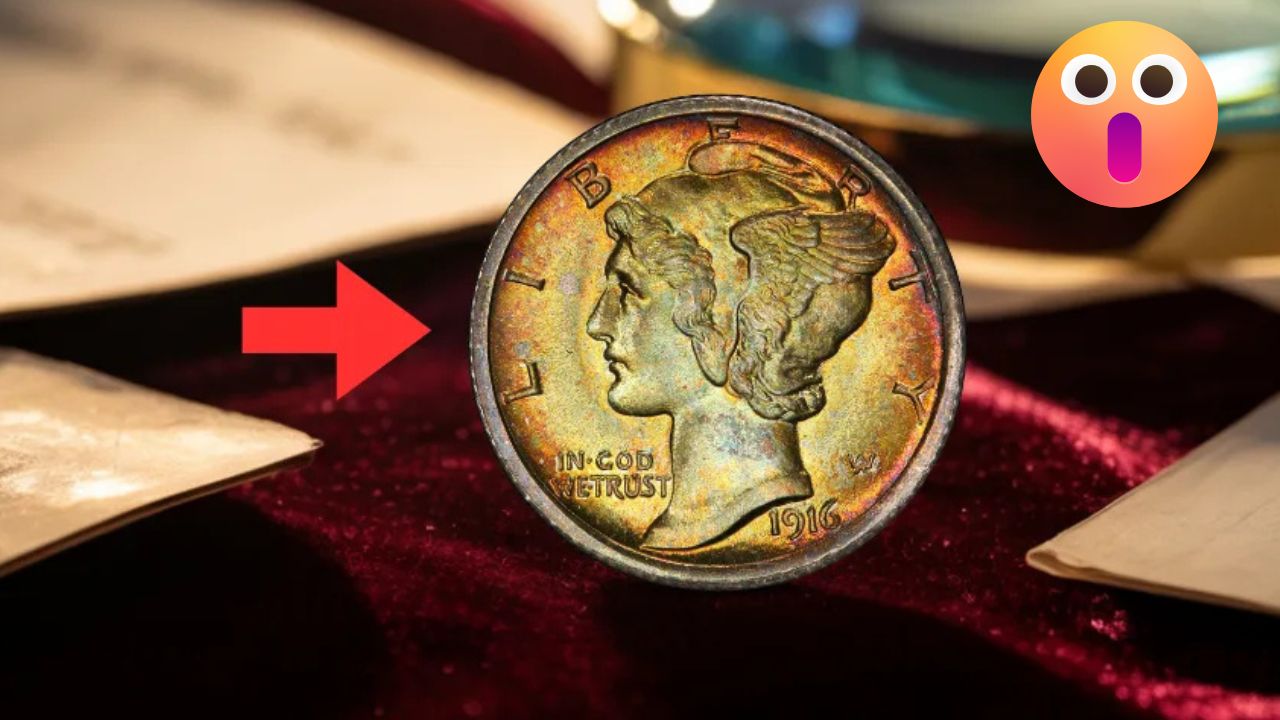In a discovery that has stunned coin collectors and experts alike, a rare 1916-D Mercury Dime, valued at an incredible $1.2 million, has been officially authenticated by a top auction house. What makes this find even more remarkable is that the coin was reportedly still in everyday circulation until very recently.
A Routine Purchase Turns into a Historic Find
The dime, minted over a century ago in 1916, was casually used during a cash transaction at a small grocery store in the Midwest. According to initial reports, a store employee noticed the coin’s unusual design while sorting through the register and decided to set it aside for closer inspection.
This simple act sparked a chain of expert appraisals and verifications, culminating in a definitive confirmation from Dominion Heritage Auctions, a trusted authority in the world of rare coins.
Why the 1916-D Mercury Dime Is So Valuable
The Mercury Dime series, officially called the Winged Liberty Head Dime, was produced by the U.S. Mint between 1916 and 1945. The coin’s striking design features Liberty wearing a winged cap, often mistaken for the Roman god Mercury—hence the popular nickname.
While many Mercury Dimes still circulate in pockets and coin jars, the 1916-D Mercury Dime is a rare exception. Minted in Denver, this particular coin had a limited production of approximately 264,000 pieces. Most have either been lost over time or carefully preserved by collectors.
What truly sets this recent discovery apart is the coin’s exceptional condition. Despite being in circulation, it shows minimal wear, a sharp strike, and outstanding detail—all factors that significantly increase its value.
A Wake-Up Call for Coin Collectors and Casual Savers
The news of this rare dime still turning up in everyday change has captured the attention of collectors and ordinary Americans alike. It’s a powerful reminder that valuable coins may still be hiding in plain sight.
Mark Dillard, senior appraiser at Dominion Heritage Auctions, commented, “There are still treasures out there. Coins that look ordinary to most people could have extraordinary value.”
This discovery follows a pattern of rare coins surfacing unexpectedly, like the famous 1943 copper penny or the 1970-S small date Lincoln cent—both fetching impressive prices at auction. However, the 1916-D Mercury Dime’s condition and the story of its simple discovery make it especially noteworthy.
How to Identify a 1916-D Mercury Dime
If you’re now curious about the coins in your own collection or change jar, here’s what to look for when identifying a genuine 1916-D Mercury Dime:
- The year “1916” clearly stamped on the obverse (front) side of the coin.
- A small “D” mint mark on the reverse (back) side, located near the bottom left of the fasces (a bundle of rods with an axe).
- The coin’s distinct silver color and small size, consistent with a 10-cent piece.
Experts recommend using a magnifying glass and comparing coins to verified images from trusted coin catalogs or numismatic websites.
Final Thoughts: Hidden Treasure Could Be in Your Pocket
As this rare 1916-D Mercury Dime heads toward auction, interest is soaring among collectors worldwide. Whether it sells for the full $1.2 million or more remains to be seen, but the excitement surrounding the find is undeniable.
For the everyday person, this story highlights the unexpected value that can be found in ordinary coins. A seemingly common dime, passed down through generations and used in daily transactions, has now become a historic treasure.
Next time you check your loose change or coin jar, take a closer look—you might be holding onto something far more valuable than you realize.
